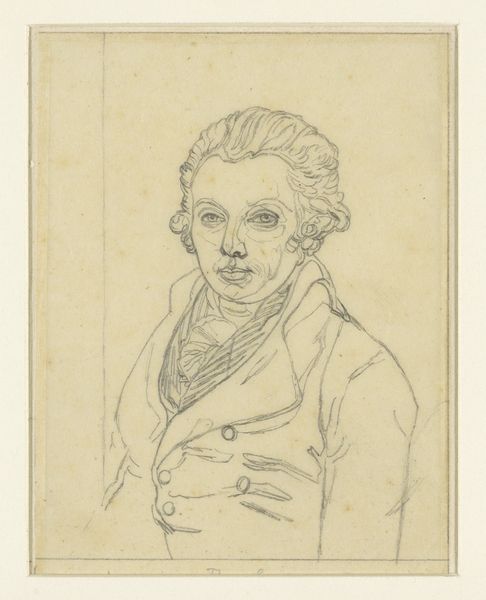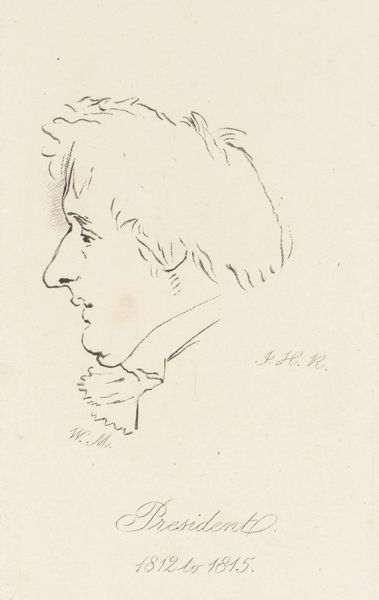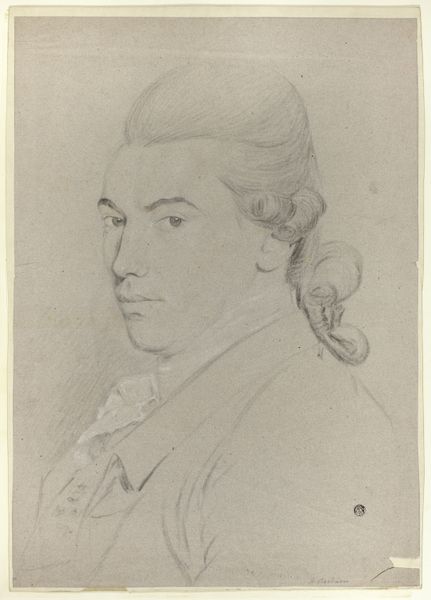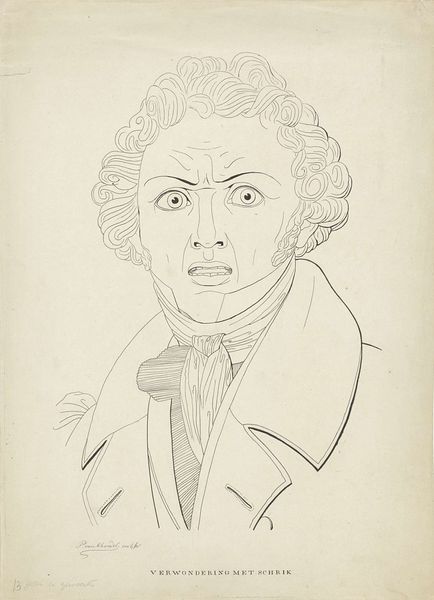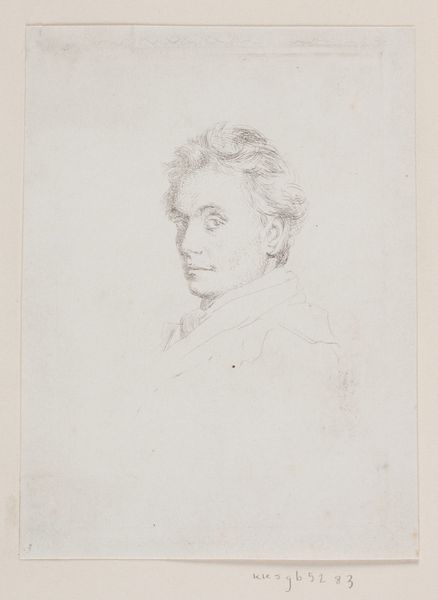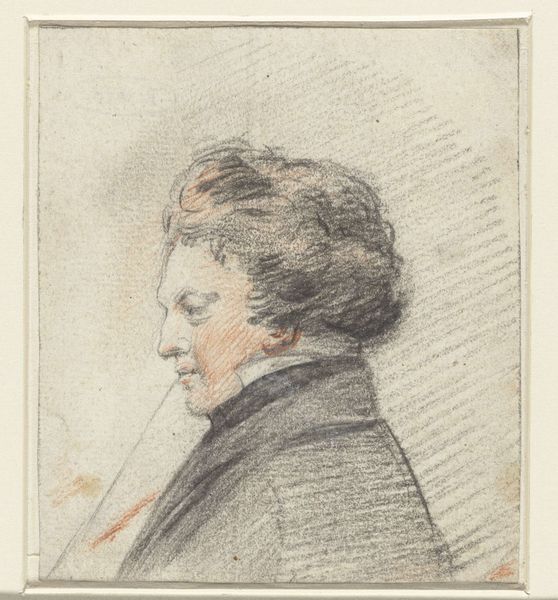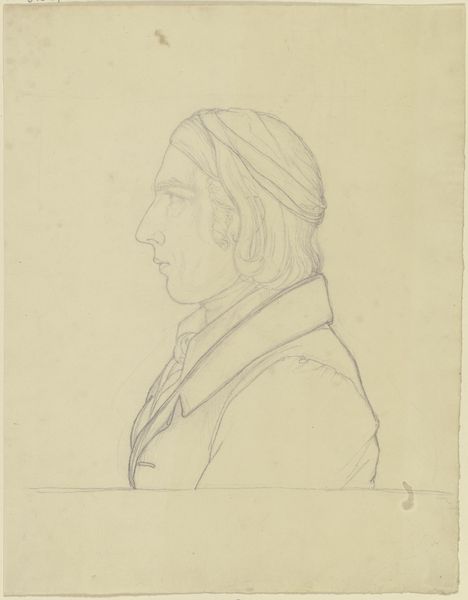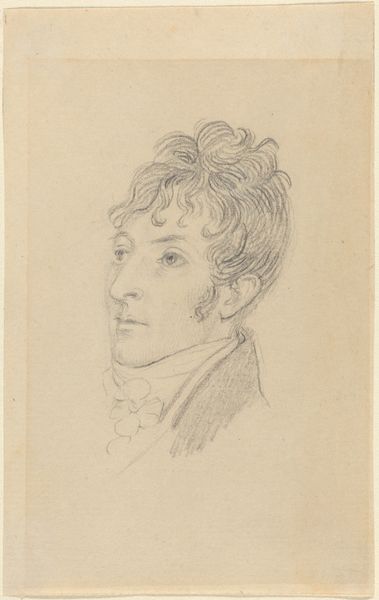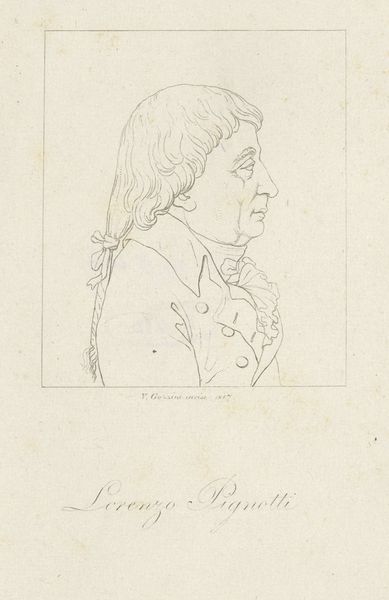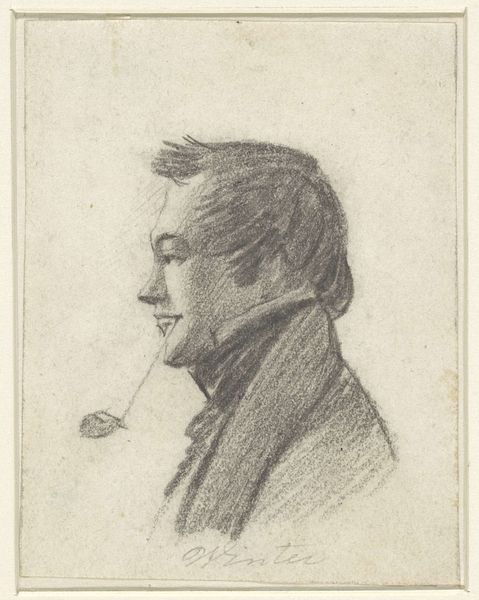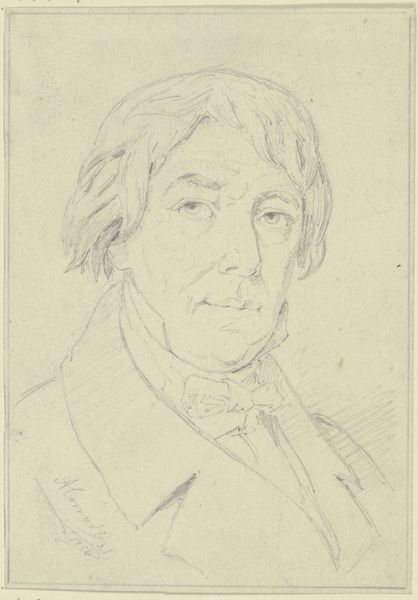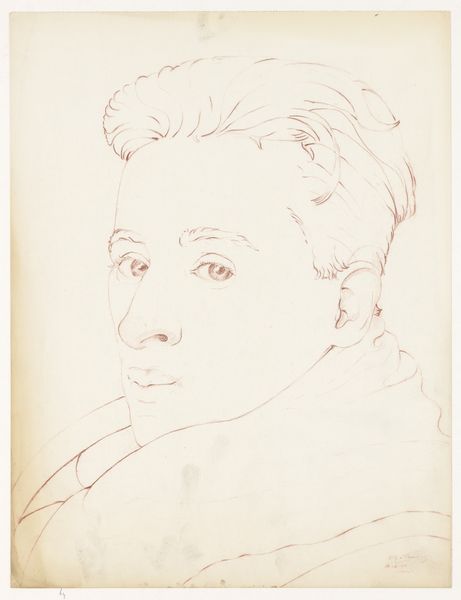
drawing, pencil
#
portrait
#
pencil drawn
#
drawing
#
neoclacissism
#
self-portrait
#
caricature
#
figuration
#
pencil
#
portrait drawing
Dimensions: height 163 mm, width 119 mm
Copyright: Rijks Museum: Open Domain
Editor: This is Adam von Bartsch's self-portrait, a pencil drawing from 1784. The linework is delicate, almost tentative. What can you tell me about it? Curator: Consider the material context of 1784. What did it *mean* to create a self-portrait in pencil at this time? Pencil wasn’t yet the mass-produced object we know today. The sourcing of graphite, the craftsmanship required to create a usable drawing tool – these were material acts tied to specific locations and labor practices. Look closely at the varying pressure of the pencil strokes. What does that tell us about von Bartsch’s physical engagement with the medium, with the paper itself? Editor: So you’re saying the *choice* of pencil carries meaning beyond just being a convenient tool? Curator: Precisely! The seeming informality of pencil – often used for sketches and preparatory drawings – is subverted when used for a formal self-portrait. This challenges traditional hierarchies between finished works and process, between the artist as refined creator and the artist as worker. It’s important to examine the socio-economic conditions that made both the production of this artwork possible, *and* our engagement with it today. How does our contemporary access to pencils, and reproductions of this drawing, affect our reading of it? Editor: I never thought about the pencil itself as having so much… baggage. Curator: Exactly. Art isn't created in a vacuum. What tools and material means do you, as a young artist today, take for granted that might inform future analysis of your work? Editor: That’s given me a lot to consider. Thanks for widening my view on something so seemingly simple.
Comments
No comments
Be the first to comment and join the conversation on the ultimate creative platform.

